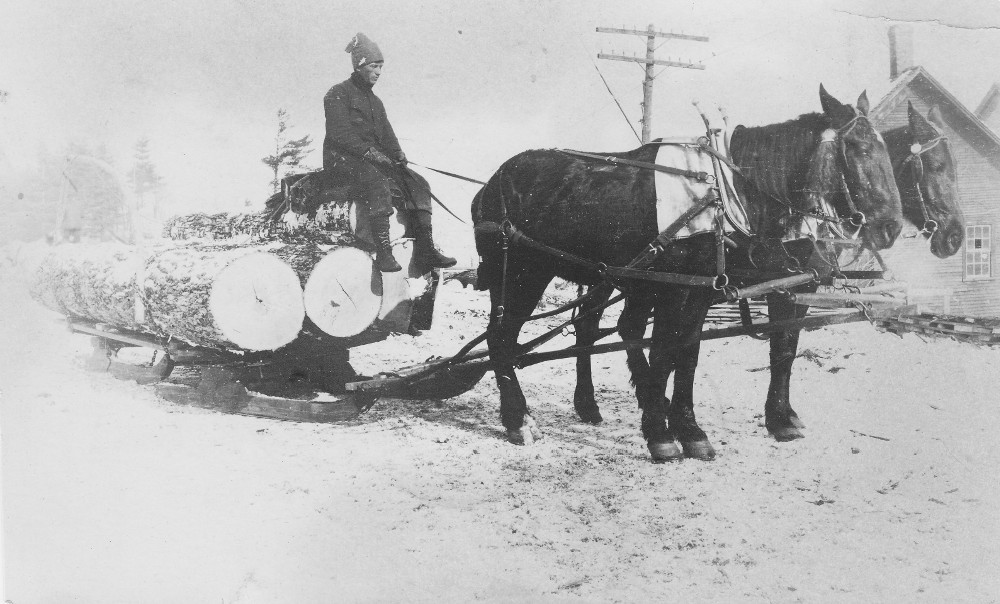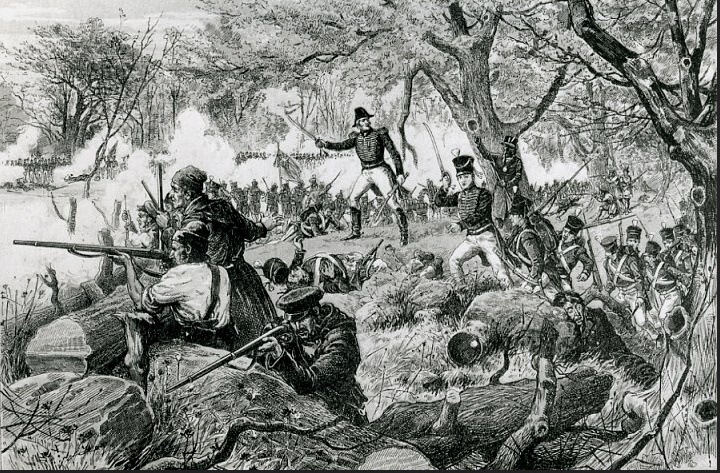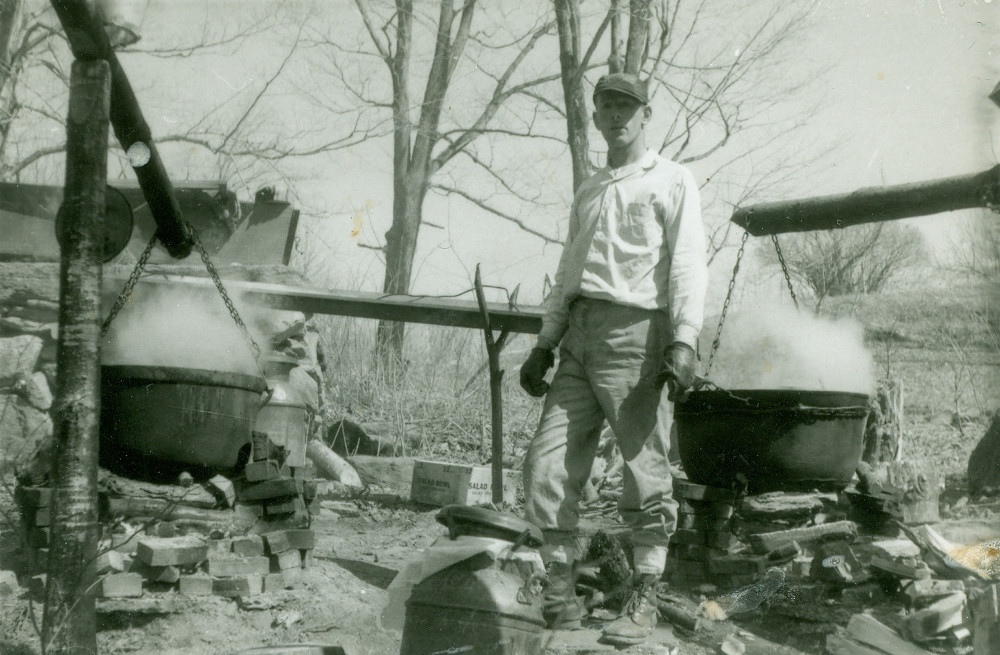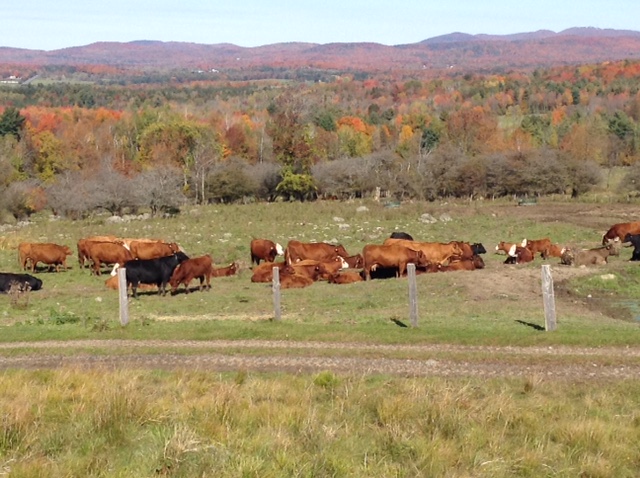A symbolic border
Despite the border, there was considerable trade between Vermont and Lower Canada, the name given to Québec by the Constitutional Act of 1791; both economies were closely linked, particularly in the potash, timber and livestock sectors.

Transporting logs was often done during winter, because the snow made it easy to use sleds with runners.
In fact, every time someone tried to limit trade with Canada, Vermonters got angry. It was obvious why; Canada was their main, if not their only, market.
One of many examples was a decree issued by U.S. President Thomas Jefferson in 1808 forbidding exports to British territories, one of which was Lower Canada. In Vermont, this policy was denounced in every possible way, including through satire, as shown by this article published that year in the Vermont Sentinel.
Now suppose a man should drive a herd of pigs close to the line of the United States, but not over, and a Canadian should accidentally make his appearance just within the boundary of this British colony, with a basket of corn in his hand and should cry Pig-Pig-Pig and the hole (sic) herd should run over the line into Canada (…), who should be punished, the farmer (…), the swine (…) or the Canadian?
Four years later, in 1812, England and the United States declared war. Fierce fighting took place to the west, especially near Châteauguay.

The outcome was determined in Châteauguay on October 25 and 26, 1813, in a battle won by British-Canadian troops.
Nonetheless, the border remained open between Sutton Township and Vermont. That at least is what’s indicated in the diary of 21-year-old Mary Frary of Sutton. On June 15, 1812, she notes that the two countries have gone to war, and says she fears the harmful effects of the conflict. But in the weeks that followed she recounts taking several trips across the border without any problem, such as on August 20, 1812.
Listen to an audio extract of a journal entry from Mary Frary’s diary concerning the War of 1812.





